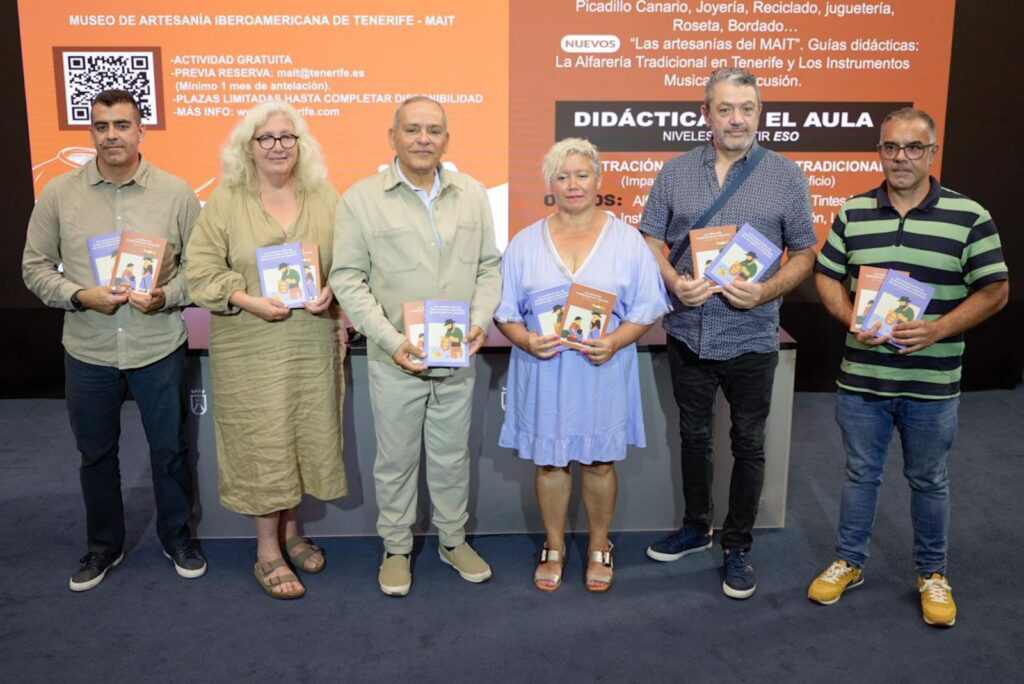Considered the most beautiful fountain in Santa Cruz, the elegant white lady with a romantic appearance stands out. Undoubtedly, it is the most exquisite and artistic fountain among all those adorning the public spaces of the capital of Tenerife. The fountain in Plaza de Weyler is a monumental gem that has been enhancing the most central corner of Santa Cruz for 125 years, establishing itself as one of the most aesthetic and evocative symbols of the city.
The Santa Cruz City Council has recently completed the restoration of the sculptural fountain in the emblematic Weyler Square, along with the four flowerpots surrounding it. Led by the General Foundation of the University of La Laguna, the project required an investment of 55,500.25 euros. It involved the installation of plumbing, electricity, lighting, and the improvement of the watertightness of the marble vessel in neoclassical style, dating back to 1899. Additionally, the fountain is declared a Site of Cultural Interest as part of the Historic Complex of Barrio de Los Hoteles-Pino de Oro.
The conservator-restorer, Antonio J. Sánchez Fernández, along with architect José Yeray Santos Santana, explained, “We conducted a chemical cleaning to eliminate deposits from the surface, resolved leaks, cracks, and fractures from previous replacements, waterproofed the basin, applied water-repellent material, and renewed the installation of filters and facilities.” Imesapi SA and Cúrcuma were the companies responsible for the fountain’s rehabilitation.
Today, the gentle murmur of the century-old fountain, now restored to its original cascading water play, is almost imperceptible amidst the traffic noise surrounding its location in the heart of the city. The fountain stands amidst a guard of lush Indian laurels that both protect and obscure it, resembling a modest white princess. Weyler Square currently serves as the focal point of the capital, originating as a dusty wasteland on the outskirts of Santa Cruz. Positioned at its core, the Genoese fountain presides over the bustling public area, offering an elegant introduction to the Captaincy General palace.
The history of this corner of Santa Cruz and its monumental fountain spans over a century and is worth revisiting. The fountain, now 125 years old as of 2024, originated from the proposal by councillors Luis Candellot and Isidro Miranda to acquire a new marble fountain for Plaza Weyler, replacing the old pond described as “rickety and unaesthetic” in the Diario de Tenerife. This acquisition was authorised by Mayor Ildefonso Cruz. In 1899, Pedro Schwartz, then mayor, oversaw the arrival and installation of the Genoa fountain in Santa Cruz. It was inaugurated officially in 1900, serving as the final decorative touch to the emblematic public space of the Tenerife capital.
Canessa’s Masterpiece
The artistic Weyler fountain, crafted from white Carrara marble with neo-Renaissance features, stands at 5.8 metres in height and is pyramid-shaped. Adorning the central body are statues of two children holding a garland of flowers. Positioned on the central floor are four children, each in a corner, holding a dolphin spouting water into the shells below. While the fountain was initially installed in 1899, it was not until 1958 that the architectural complex was complemented with four large Carrara marble vases.
The sculptural elements of the fountain were created by Italian artist Achille Canessa, commissioned from the company Francisco Franchini y Cia in Genoa for 11,380 lire. A significant portion of this sum, 6,478 lire, was covered by popular subscription, posing financial challenges to the municipal treasury. To settle the outstanding debt of 5,000 lire, the City Council resorted to selling wood from barracks used to accommodate repatriated troops from Cuba. Today, the fountain remains a cherished and well-maintained symbol of the city. Celebrating its 125th anniversary, the Weyler fountain was restored by the City Council in 2009, following a project by architect Alejandro Beautell, acknowledging its historical significance and high artistic value.
The restoration included a comprehensive cleaning using a sandblasting system to remove rust, bacteria, stains, fungi, and algae from the marble, affected by traffic pollution and pigeon droppings. The project also involved replacing water pipes, installing two new pumps, and enhancing the electrical system. This endeavour revitalised the fountain, ensuring it retains its original splendour as we enter 2024.
A Square Emerging from Nothing
Plaza Weyler’s origin, as described by Luis Cola Benítez, reflects its creation ex nihilo, not as a result of surrounding buildings but rather with buildings adapting to the space. Until the late 18th century, the area remained underdeveloped, with only a few isolated constructions present. Subsequently, it transitioned into a military campsite, prompting the planting of trees and later evolving into the square we see today. Named after Captain General Valeriano Weyler following the demolition of the military hospital to make way for the Captaincy General palace, the square underwent various transformations over time. It emerged as a thoroughfare rather than a recreational space, a true gem of Santa Cruz.
















